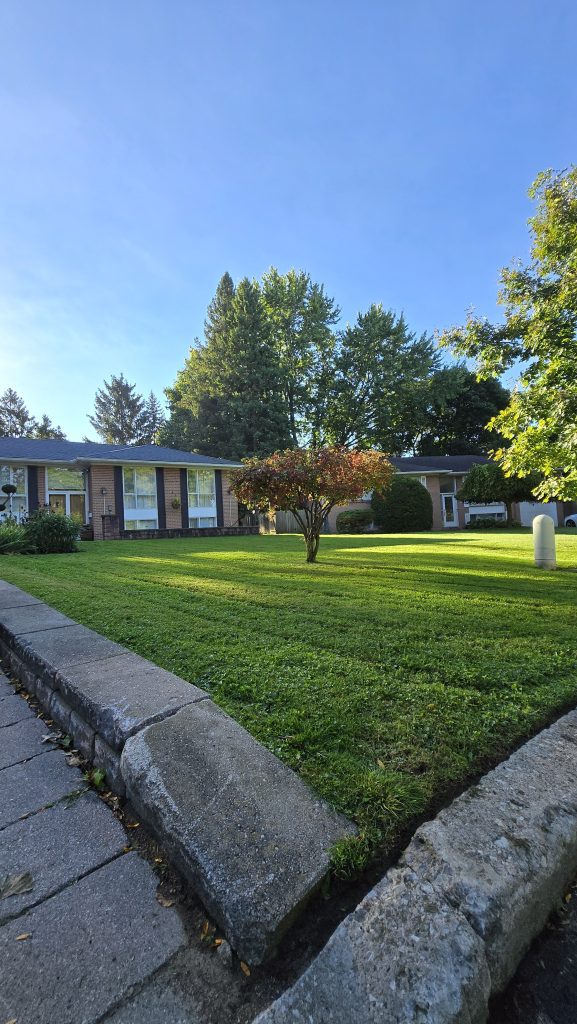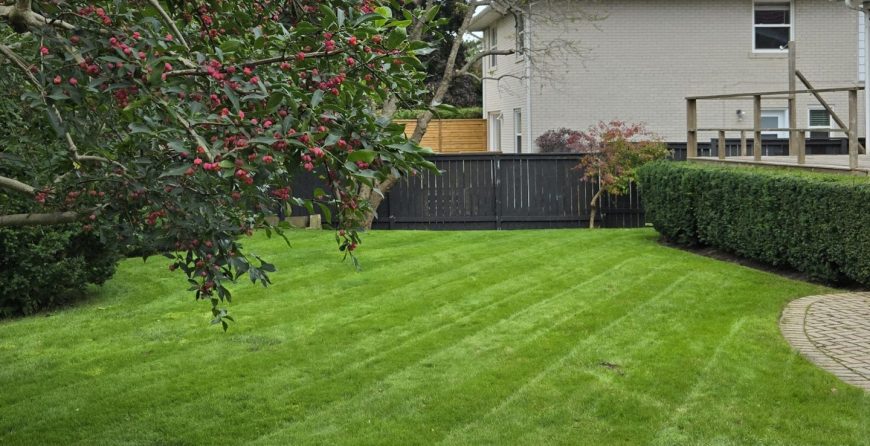A well-maintained lawn is the foundation of a beautiful landscape. One major aspect to ensuring your grass is healthy and vibrant is proper watering. But how do you ensure you’re giving your lawn the right amount of water without overdoing it or underwatering? In this ultimate guide to watering your lawn, we’ll walk you through everything you need to know to create a lush, green yard.
Why Proper Watering Matters
Watering is essential for your lawn’s health because it helps grass develop deep roots, stay green during the hot summer months, and resist stressing factors that arise throughout the year. Improper watering can lead to yellowing, disease, or even death of the grass. By learning the right techniques, you’ll save both water and time, and achieve the landscape of your dreams.
If you are interesting in understanding the scientific reasoning behind why plants need and how they utilize water, you can click HERE.
How Much Water Does Your Lawn Need?
Most lawns require 1 to 1.5 inches of water per week. This can come from rain, irrigation, or a combination of both. To check how much water your lawn is receiving, you can use a rain gauge or place an empty container in your yard while watering to measure the output.
Warm-season grasses like Bermuda and Zoysia are more drought-resistant, and thus can tolerate less frequent watering. Meanwhile, cool-season grasses like Kentucky bluegrass and fescue require more water, especially in the summer.
Factors that Affect Watering Needs:
- Grass Type: Warm-season vs. cool-season grasses
- Soil Type: Sandy soil drains faster and may need more frequent watering; clay retains water longer.
- Climate: Hot, dry climates will require more frequent watering than cooler or more humid areas.
Learn more about how Terra can assist with sodding on our services page.
Best Time to Water Your Lawn
To maximize water absorption and reduce evaporation, the best time to water your lawn is early in the morning, between 6 AM and 10 AM. Watering at this time allows the grass to absorb water before the heat of the day sets in.
Avoid these watering times:
- Midday: High temperatures cause water to evaporate before it can be absorbed.
- Evening: Water sitting on the grass overnight can lead to fungal growth.
Watering Techniques: Deep and Infrequent
One of the biggest mistakes homeowners make is watering too frequently but not deeply enough. Watering deeply but infrequently encourages the grass to develop deeper roots, making it more drought-resistant. Aim for 2–3 watering sessions per week, with each session providing enough water to penetrate 6–8 inches into the soil.
Use a screwdriver or soil probe to test how deep the water has reached after watering. This will ensure your grass is getting enough hydration for strong root growth.
Common Watering Mistakes to Avoid
Many lawn problems come from improper watering. Here are some common mistakes to watch out for:
- Overwatering: Leads to shallow roots, weed growth, and lawn disease.
- Underwatering: Causes brown patches, dry spots, and stressed grass.
- Uneven Watering: Ensure your sprinklers are providing even coverage across your lawn.
- Watering at the Wrong Time: Watering in the evening can invite pests and fungi, while midday watering results in water loss.
Check out our recent blog Common Lawn Care Mistakes and How to Fix Them!
Watering Tips for Different Seasons
Your lawn’s watering needs will change throughout the year. Here’s how to adjust based on the season:
- Spring: Gradually increase watering frequency as temperatures rise.
- Summer: Water more frequently to combat heat stress, especially in hot and dry regions.
- Fall: Reduce watering as temperatures cool, but keep your lawn hydrated before winter dormancy.
- Winter: In regions where grass goes dormant, watering may not be necessary unless the winter is unusually dry.
Conservation Tips: How to Water Your Lawn Efficiently
Water conservation is important for both environmental and financial reasons. Here are some tips to help you water efficiently:
- Aerate your lawn: Aeration helps water penetrate more easily and reduces runoff.
- Mow at the right height: Taller grass shades the soil, reducing evaporation.
- Use mulch: Mulching around garden beds can help retain moisture.
For more water-saving tips, check out this resource on lawn irrigation efficiency.
Water Your Way to a Healthy Lawn
By following these simple guidelines for watering your lawn, you’ll set yourself up for a greener, healthier yard. From choosing the right watering time to investing in an efficient irrigation system, understanding how to water properly will help your lawn thrive year-round.
If you need expert help, or you’re unsure about your lawn’s specific watering needs, don’t hesitate to reach out to Terra Landscaping. Our team is here to help you achieve the perfect lawn.


